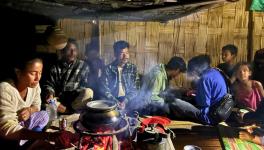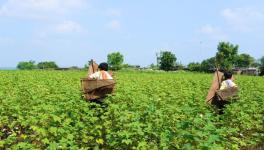Indian Heatwaves Threaten Maternal and Baby Health
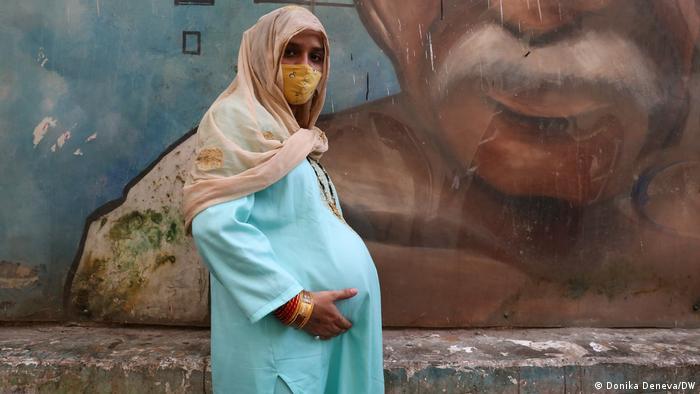
In the final weeks of her pregnancy, Babita Baswal says that when heat gets too intense, she gets dizzy and sick
The heatwave that swept across South Asia in April could not have come at a worse time for Babita Baswal. At nine months pregnant, the 32-year-old struggled with nausea and fatigue, as temperatures in Delhi soared to highs of 49 degrees Celsius (120 Fahrenheit).
After a particularly violent bout of vomiting, Baswal checked herself in to Safdarjung Hospital, where she was diagnosed with extreme dehydration.
Dr Ana, an obstetrician at the hospital who focuses on high-risk pregnancies, says that in recent weeks, many of the pregnant women in the maternity unit have been facing similar issues.
"Most of them are dehydrated, they're sweating, they're tachycardic [have a heart rate of over 100 beats per minute]," she says. "But they don't complain because in our scenario it's such a common thing."
Heatwaves in India are indeed a common occurrence, but this year the staggering temperatures came earlier than usual, hitting record-breaking highs well before summer. Northwest and central India experienced their hottest April in 122 years, according to the Indian Meteorological Department.
The unusual weather is "consistent with what we expect in a changing climate," World Meteorological Organization Secretary-General Petteri Taalas said in a statement in May.
With climate change exacerbating extreme heat in many parts of the world, experts warn that the impact on maternal and neonatal health could be devastating.
"We do see a lot of cases of oligohydramnios — that is decreased [amniotic] fluid around the baby — preterm births, higher incidence of women going into preterm labor, in the summer months," says Dr Karishma Thariani, a specialist in high-risk obstetrics who works as a consultant at Indian maternal health non-profit ARMMAN. "And summer months in India are becoming worse."
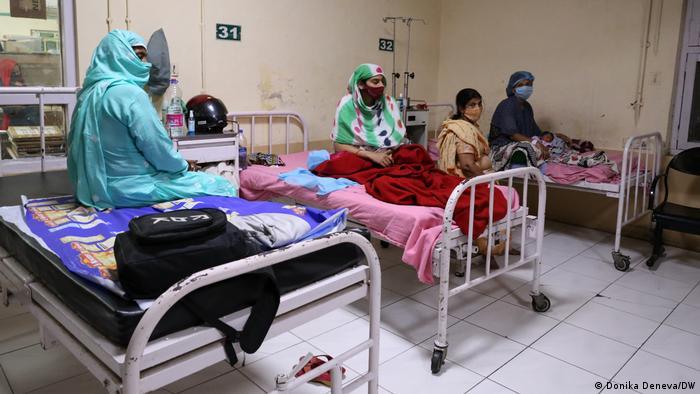
Mothers at the maternity unit at Safdarjung Hospital in Delhi at the height of the heatwave in May
Heatwaves threaten unborn children
Meta-analysis of 70 studies into the effects of heatwaves on pregnant women found that for every 1-degree Celsius temperature rise, the risk of both premature and still births rose by 5%. One Australian study reviewed found a 46% increase in still births during heatwaves, and most found a link between heat exposure during pregnancy and low birth weight.
"Temperature rises with global warming could have major implications for child health," the review, led by the Wits Reproductive Health and HIV Institute (WRHI) in South Africa, concludes. It adds that "the public also appears largely unaware of the risks of heat exposure during pregnancy."
Most of the studies were done in high-income countries. But the review says pregnant women in low- and middle-income countries could be at particular risk — in part because poorer women are less able to shield from high temperatures and may have to keep working "beyond their heat tolerance limits," even in late pregnancy.
"The effects of temperature are going to be really different in different populations in different settings," said Dr Darshnika Pemi Lakhoo, a researcher at WRHI. "Even in the same city, there's going to be different ways that people experience temperature."
In India, women with low socio-economic status "have absolutely no access to air-conditioners or coolers — or sometimes even fans in the house, because the electricity is irregular," says Dr Thariani.
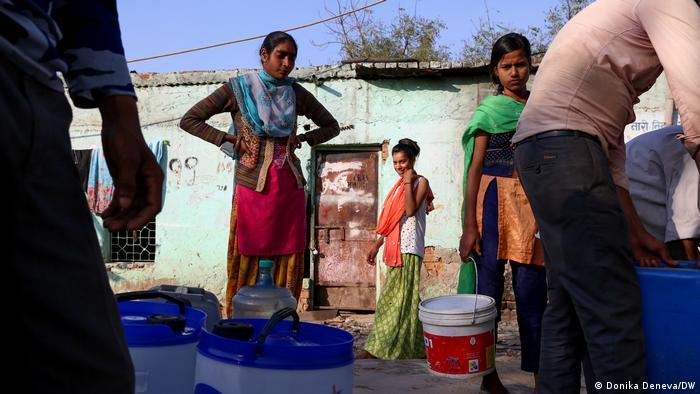
When temperatures soar, keeping cool and hydrated can depend on having resources and the luxury of slowing down.
A recent report found that 323 million people lack access to cooling across India. Baswal, who was given the all-clear after an ultrasound and advised to stay hydrated, is among the lucky few to have air-conditioning at home. But in recent weeks, surging power demand during the heatwave has led to power cuts for two to three hours each day. Each time, the temperature creeps up and "at that time I start to feel dizzy, I start vomiting," she says.
Infants at risk as temperatures soar
Heatwaves aren't just dangerous to unborn babies — higher temperatures can put newborns at risk, too. A study of neonatal intensive care unit admissions in a hospital with no air-conditioning during a 2010 heatwave in Ahmedabad found that each degree the temperature climbed above 42 C was associated with a 43% increase in admissions.
Dr Ana says the heat has left many of the women at Safdarjung Hospital unable to breastfeed: "If the woman is not hydrated, how can she feed the baby? She won't lactate properly."
India already struggles with high levels of child malnutrition, responsible for an estimated two thirds of deaths among children under five. The impacts of rising temperatures on health have long been a concern for researchers, who warn that heatwaves will exacerbate food and water shortages and facilitate the spread of infectious diseases.
Vulnerable groups, including pregnant women and children, will be most at risk. Dengue, for example, which has the highest fatality rates among children, has spread to new regions in recent years because of climate change.
Research, advocacy and policy change
Dr Lakhoo believes there is a need for more research into the direct impact of heat exposure on maternal and neonatal health.
"That's something that's not been explored nearly as well as the indirect impacts," she says. Low- and middle-income countries are particularly "underrepresented in research."
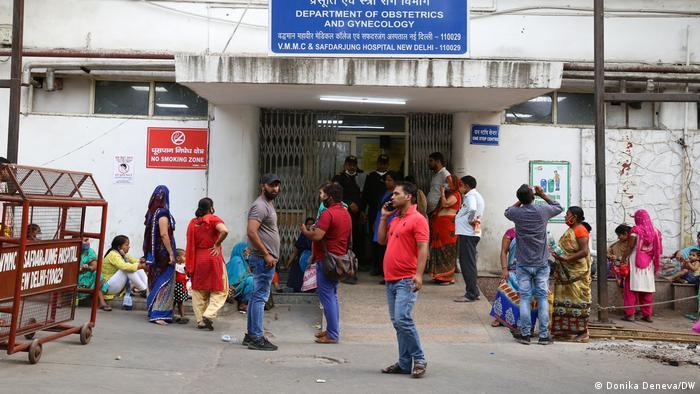
Patients and family members wait in the heat outside the department of obstetrics and gynecology at Safdarjung Hospital.
Dr Thariani agrees. This is "the first time somebody's asking my opinion on a topic like this," she says of the interview she gave DW.
ARMMAN trains healthcare workers to monitor patients for symptoms of heatstroke and counsel them on the importance of staying hydrated. But Dr Thariani says the government must do more to spread the message on the dangers of heat exposure during pregnancy.
Quantifying direct outcomes can help to push for better policy measures, as well as strengthening existing healthcare systems, Dr Lakhoo says.
"Climate change is going to be the biggest threat to health in our century," she says. "So, it is really important that we are able to do research in this field that can translate into practice to improve people's outcomes."
Data gathered by WRHI will be used to pilot a district health surveillance system in South Africa, which will act as an early warning system for healthcare providers during high temperatures. "If we know, for example, that there are going to be four or five extra preterm births when the temperature is at a certain level, then we can use that to assist in preparing healthcare systems for that extra burden," Dr Lakhoo explains.
"Working in this field, it's not just about research at all," she adds. "It really is about being an advocate."
Get the latest reports & analysis with people's perspective on Protests, movements & deep analytical videos, discussions of the current affairs in your Telegram app. Subscribe to NewsClick's Telegram channel & get Real-Time updates on stories, as they get published on our website.










